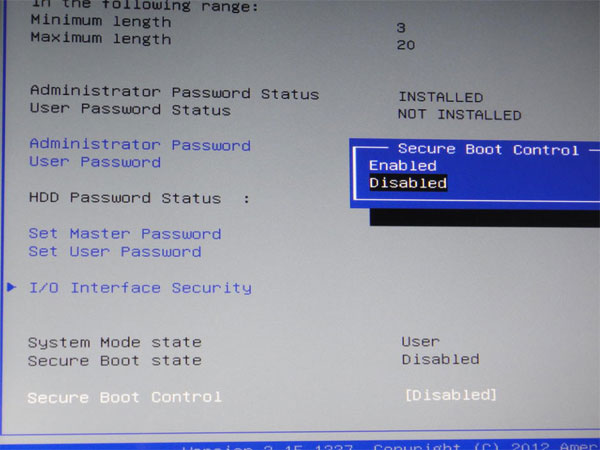

- AFTER ENTERING BIOS HOW TO DISABLE SECURE BOOT WINDOWS 10 INSTALL
- AFTER ENTERING BIOS HOW TO DISABLE SECURE BOOT WINDOWS 10 UPDATE
- AFTER ENTERING BIOS HOW TO DISABLE SECURE BOOT WINDOWS 10 PATCH
- AFTER ENTERING BIOS HOW TO DISABLE SECURE BOOT WINDOWS 10 PORTABLE
- AFTER ENTERING BIOS HOW TO DISABLE SECURE BOOT WINDOWS 10 PC
A computer should be easy and fun to use, not cause grey hairs and drive people to early graves. I wasn’t a linux fanboy before, then Windows 8, 10 and now 11 came along.I have to ask myself why.why does a grown, mentally stable man DO these things to himself. And that’s just the most easy user friendly linux distro I threw out there. A very dumb experiment, let’s face it: Windows 11 is complete and total garbage compared to Zorin OS. So yeah, this is an experiment with Windows 11. Zorin OS 16 does the exact same thing in style and with a system that is both snappy, safe and a joy to use.maybe it’s because Zorin has 80% less settings and they are all easily found in the same place. I do have to point out that Windows 11 looks and feels very half-baked, UI consistencylevel ZERO. Other than that, the performance is very similar.

AFTER ENTERING BIOS HOW TO DISABLE SECURE BOOT WINDOWS 10 UPDATE
The update was a lot quicker than Windows 10 on this machine, I guess that’s something.
AFTER ENTERING BIOS HOW TO DISABLE SECURE BOOT WINDOWS 10 PATCH
Patch tuesday and a cumulative update later all is well in old-potatoland. Today is the first patch tuesday so I will be bamboozled if nothing explodes.īut yeah, W11 installed on an almost 15 year old potato with 2GB RAM and none of the required important bits.
AFTER ENTERING BIOS HOW TO DISABLE SECURE BOOT WINDOWS 10 INSTALL
In my case the install completed without a hitch and all is well. Then you can insert name and password, with no internet or microsoft involved, making your install roughly three hundred billion times better. When the install reaches “connect to wifi”, press shift+F10, in command prompt write taskmgr and kill network flow blaa blaa whatever it is english. oh well, moving on:Ĭlean install on a wiped and formatted drive, computer previously ran W10 21H2 with local account also. While installing, I add 2 more afterwards, it’s a little quirk with S7210 =) it refuses any install with 4GB but accepts it afterwards. Used Rufus Beta, MBR, Extended Windows 11 Installation (no TPM, no Secure Boot, 8GB- RAM) Oh, and by the way: this old laptop has TWO GB of RAM.

Pay attention to the Drive Letter, Volume Label if you have more than one storage device plugged into your computer, and choose the correct one. Select the USB drive that you want to use.
AFTER ENTERING BIOS HOW TO DISABLE SECURE BOOT WINDOWS 10 PORTABLE
It's a portable program, run the EXE, and its interface should pop-up.ģ. At the time of writing this article, the current build is Rufus Beta 2 (rufus-3.16_BETA2.exe)Ģ. Go to the official website and download the latest beta release. How to disable TPM, Secure Boot and RAM requirements for Windows 11ġ. Please take a backup of any data, pictures or videos, that is on the flash drive before you go ahead, as formatting the thumb drive will erase all contents on it. Before proceeding, make sure you have a USB flash drive that has a storage capacity of 8GB or more, for creating the bootable media. Add UEFI Shell ISO downloads (retroactively applied through FIDO).Click on Repair your computer on the lower left side of the screen. After entering the Windows Setup screen, choose the language, time, and keyboard or input method and hit Next to proceed.
AFTER ENTERING BIOS HOW TO DISABLE SECURE BOOT WINDOWS 10 PC


 0 kommentar(er)
0 kommentar(er)
